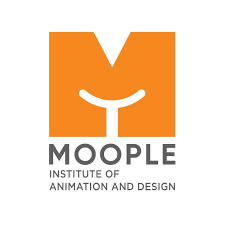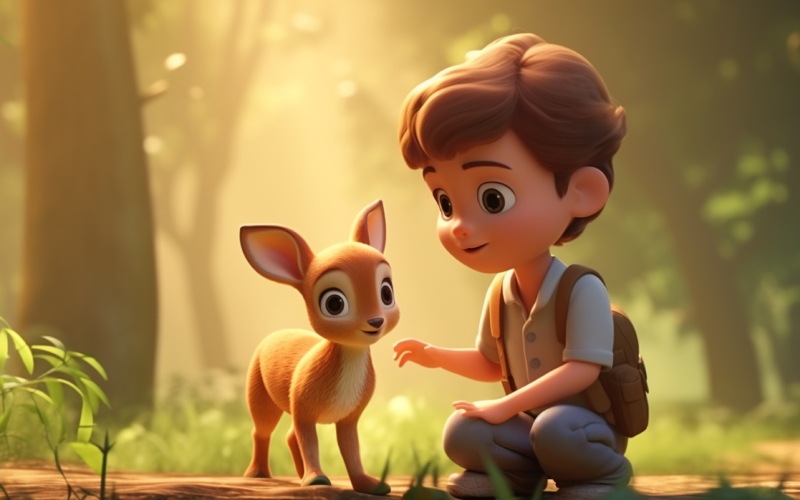Animation is a mesmerizing art form that seamlessly combines creativity with technology, bringing characters and stories to life in ways that captivate audiences of all ages. Whether it’s the magic of Disney classics or the immersive worlds of Pixar, animation has the power to inspire, entertain, and evoke emotion. At Moople Institute, we’re passionate about nurturing the next generation of animators and providing them with the skills and knowledge they need to succeed in this dynamic industry. Our 12-month 3D Animation Courses are designed to take students on a comprehensive journey through the fascinating world of animation, covering everything from fundamental principles to advanced techniques. Let’s delve into the details of what awaits students during their time at Moople.
1. Introduction to Animation Principles:
The foundation of any successful animator lies in understanding the core principles of animation. In the initial phase of our 3D Animation Courses, students will dive into the principles of timing, spacing, and squash and stretch, learning how to bring characters and objects to life through movement and expression. Through hands-on exercises and animation studies, students will develop a deep understanding of these principles and how they apply to different styles of animation.
2. Basic to Advanced Rigging:
Rigging is the process of creating a digital skeleton for 3D models and animation courses, allowing animators to manipulate them with ease. In this phase of the course, students will learn the basics of rigging, including joint placement, skinning, and IK/FK controls. As they progress, they’ll delve into more advanced rigging techniques, such as facial rigging, character deformation, and rigging for complex mechanical objects. By the end of this module, students will have the skills to rig a variety of characters and creatures, ready to breathe life into them through animation.
3. Basic Bouncing Ball Animation in Maya:
The bouncing ball is a classic exercise in animation that teaches students the principles of timing, weight, and anticipation. Using Autodesk Maya, students will learn how to animate a simple bouncing ball, starting with the basics of keyframe animation and progressing to more complex movements such as squash and stretch. This exercise lays the groundwork for understanding the principles of animation and serves as a stepping stone to more advanced projects.
4. Animation Principle Study with Different Object Animation:
Building on their knowledge of animation principles taught at our 3D Animation institute, students will explore how these principles apply to different objects and scenarios. From inanimate objects to complex characters, students will experiment with various animation techniques and styles, honing their skills in storytelling and character development. Through guided projects and critiques, students will refine their animation abilities and develop their unique artistic voice.
5. Introduction to Character Animation:
Character animation is at the heart of 3D animation and graphics courses, allowing animators to breathe life into digital creations and convey emotion through movement. In this phase of the course, students will learn the art of character animation, focusing on principles such as posing, timing, and acting. Using industry-standard software like Autodesk Maya, students will animate characters in a variety of scenarios, from simple actions to full-fledged performances.
6. Different Pose Study in Maya:
Posing is an essential skill for any character animator, as it communicates the personality, mood, and intentions of a character. In this module, students will study different poses and gestures, exploring how subtle changes in body language can convey a range of emotions and attitudes. Through observation, analysis, and practice, students will develop their posing skills and learn how to create dynamic and expressive character poses.
7. Basic Human Locomotion – Walk, Run, Jump:
Human locomotion is a fundamental aspect of character animation, requiring an understanding of anatomy, physics, and biomechanics. In this module, students will study the mechanics of human movement, focusing on basic actions such as walking, running, and jumping. Using reference footage and animation exercises, students will learn how to animate these movements convincingly, paying attention to weight, balance, and timing.
8. Advanced Body Mechanism:
Building on their understanding of basic human locomotion, students will delve into more advanced body mechanics, including complex actions such as climbing, crawling, and interacting with objects. Through animation exercises and studies, students will explore the intricacies of movement and learn how to animate characters with precision and realism.
9. Acting for Animation:
Acting is a crucial skill for animators, allowing them to create characters that feel authentic and relatable. In this module, students will learn the principles of acting for animation, studying character motivations, emotions, and gestures. Using acting exercises and improvisation techniques, students will explore how to convey personality and emotion through movement and expression.
10. Lip-sync and Facial Expressions:
Facial animation is an essential aspect of character performance, enabling animators to convey a wide range of emotions and expressions. In this phase of the course, students will learn how to animate lip-sync and facial expressions, syncing character dialogue with mouth movements and conveying subtle emotions through facial gestures. Using industry-standard tools and techniques, students will bring their characters to life with expressive and believable performances.
11. Student Portfolio Making in 3D:
Throughout the course, students will work on a series of projects and assignments designed to showcase their skills and creativity. In the final phase of the course, students will compile their best work into a professional portfolio, highlighting their strengths as animators and showcasing their growth and development over the past 12 months. This portfolio will serve as a valuable tool for students as they embark on their careers in animation, demonstrating their abilities to potential employers and collaborators.
Conclusion:
The 12-month 3D Animation Courses at Moople Institute offer a comprehensive journey into the exciting world of animation. From mastering the principles of animation to honing advanced rigging and character animation techniques, students will acquire the skills and knowledge needed to succeed in this dynamic industry. With experienced instructors, industry-standard software, and hands-on training, Moople Institute is committed to nurturing the next generation of talented animators. Join us on this immersive journey and unlock your full potential in the world of 3D animation!

